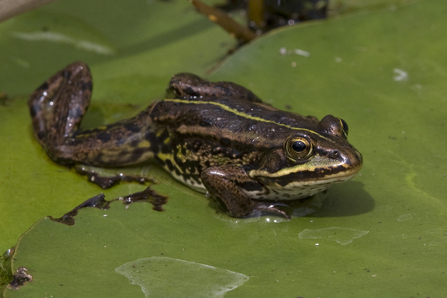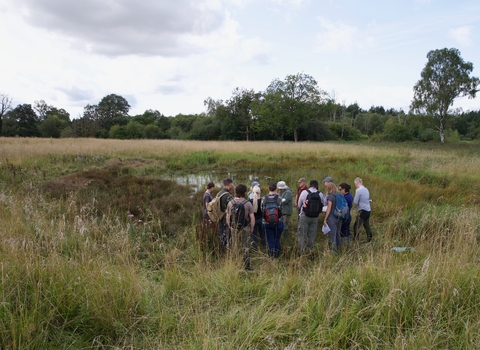In 2023, thanks to a generous legacy and donor support, we acquired Mere Farm, a 130-acre site that borders with Thompson Common. We could see the huge potential of the land for enhanced habitat creation, especially to encourage the northern pool frog to expand its range from its stronghold at Thompson.
Over the last two years, thanks to funding from Natural England’s Species Recovery Programme Capital Grants Scheme, match-funded by the Banister Trust, we have successfully worked alongside the Woodland Trust and the Amphibian and Reptile Conservation Trust (ARC) to create a tapestry of wildlife habitats on our adjoined land surrounding Thompson Common.
Providing the perfect habitat for the globally rare northern pool frog has been at the heart of this project. With advice from pool frog experts at ARC and our skilled digger operator, we have excavated six ghost pingos at Mere Farm — and just over the fence at the Woodland Trust-owned Green Farm, we have supported the restoration of a further eight.


